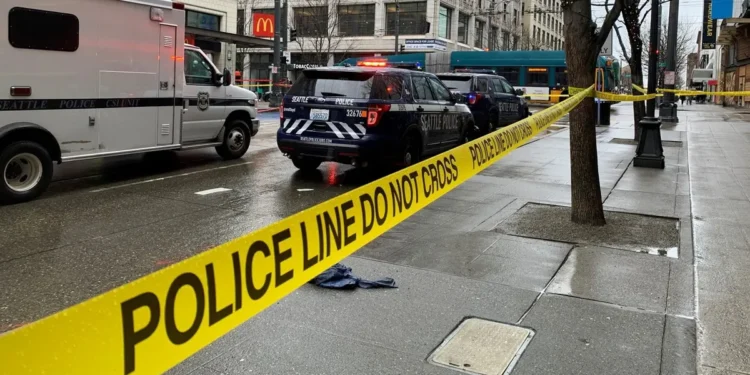Seattle has recorded no homicides for over a month, marking an unusual period of reduced fatal violence in a city that typically averages multiple homicides monthly.
The streak began following the August 11 double shooting at Virgil Flaim Park in Lake City, where two men were fatally shot near a homeless encampment. A 40-year-old victim died at the scene, while a 33-year-old man succumbed to injuries at Harborview Medical Center.
Witnesses reported the shooting occurred within feet of children playing basketball at the park, highlighting the random nature of urban violence that can affect innocent bystanders.
The incident prompted immediate city action, including sweeping the large encampment adjacent to the crime scene. Officials subsequently closed three additional parks citing safety concerns: Lake City Mini Park, Seven Hills Park, and a pavilion within Dr. Blanche Lavizzo Park on August 28.
“We recognize that this park has been impacted by bouts of negative park activity, and we will continue to work to ensure that all parks are clean, safe, and welcoming,” the city parks department stated regarding the 60-day closures.
While the homicide-free period represents positive news for a city of over 750,000 residents, crime statistics typically fluctuate significantly over short timeframes. Seattle averages approximately 40-50 homicides annually, making month-long gaps statistically possible though relatively uncommon.
The period coincides with expanded surveillance measures approved by Seattle City Council this week. New camera installations will monitor Capitol Hill, the Central District, and SODO, supplementing existing systems on Aurora Avenue and in the Chinatown-International District deployed since October 2024.
The legislation also grants Seattle Police access to Department of Transportation traffic management cameras through the Real Time Crime Center, expanding monitoring capabilities across the city.
These technological enhancements reflect ongoing debates about balancing public safety with privacy concerns as cities nationwide grapple with crime prevention strategies.
The current stretch without fatal violence provides an opportunity to examine which factors contribute to reduced homicide rates, though experts caution against drawing conclusions from short-term trends.
Sustained reductions in serious violent crime typically require comprehensive approaches addressing underlying social conditions, mental health services, substance abuse treatment, and economic opportunities alongside traditional law enforcement measures.
Seattle’s experience reflects broader national conversations about effective policing strategies, community investment priorities, and the role of technology in crime prevention.







